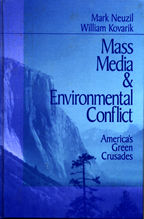 Two weeks in the Maine woods, and my morning commute is remarkable: I walk down a short gravel road to a pathway, then amble a mile to work through tall hemlocks and oaks. Mid-way, I mosey slowly across a long wooden bridge — the product of 20 years effort, I’m told. I have to stop and watch Sandy Stream as it meanders down to the great green Atlantic, reflecting my world like a lady with a liquid mirror.
Two weeks in the Maine woods, and my morning commute is remarkable: I walk down a short gravel road to a pathway, then amble a mile to work through tall hemlocks and oaks. Mid-way, I mosey slowly across a long wooden bridge — the product of 20 years effort, I’m told. I have to stop and watch Sandy Stream as it meanders down to the great green Atlantic, reflecting my world like a lady with a liquid mirror.
-
Search It!
-
Recent Entries
- Welcome – Prof. Kovarik
- Farewell to John Fox
- How a silent movie informs the current debate over the right to be forgotten
- That time private US media companies stepped in to silence the falsehoods and incitements of a major public figure … in 1938
- Saudi Oil: We should have known better
- We undercount hemispheric oil reserves
- Mainz – The city that invented modernity
- Soft soap and fracking
- Free speech and international law
- In solidarity
-
Links




 Revolutions in Communication
Revolutions in Communication Mass Media & Environmental Conflict
Mass Media & Environmental Conflict